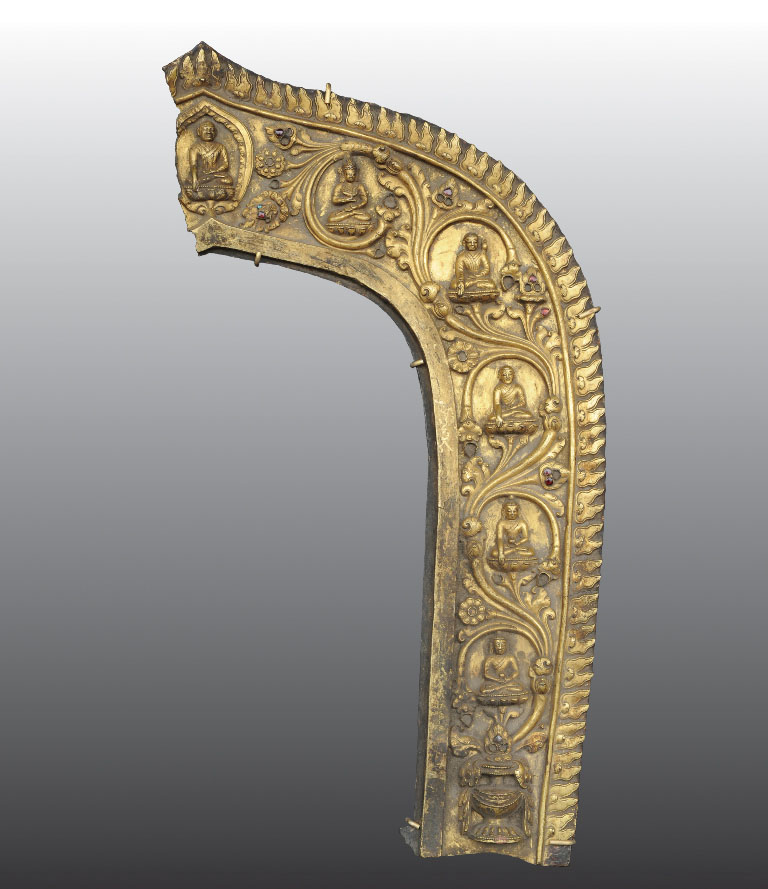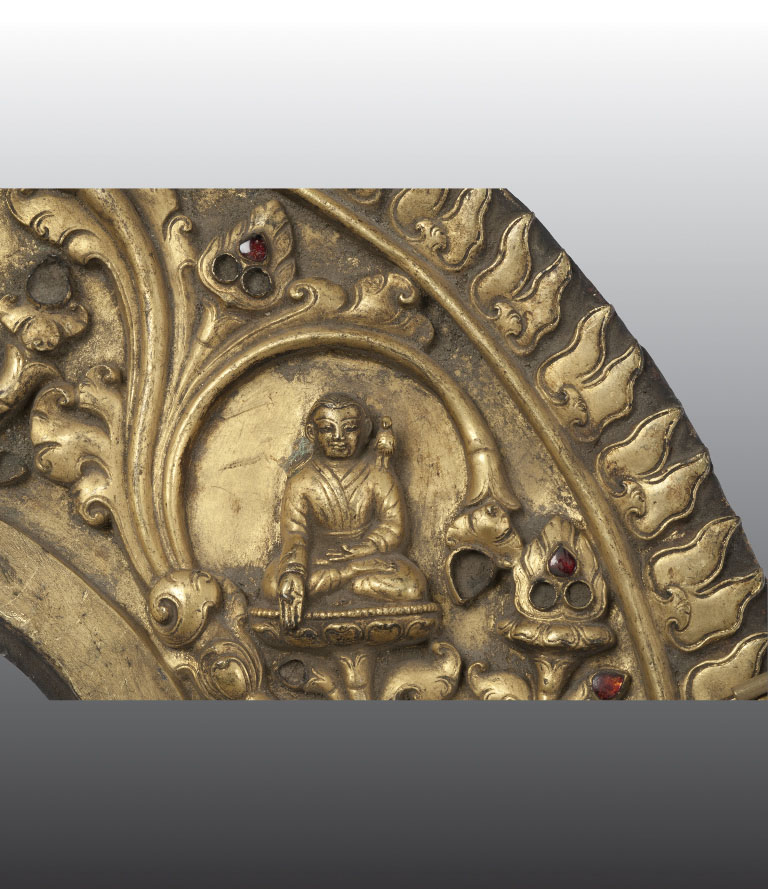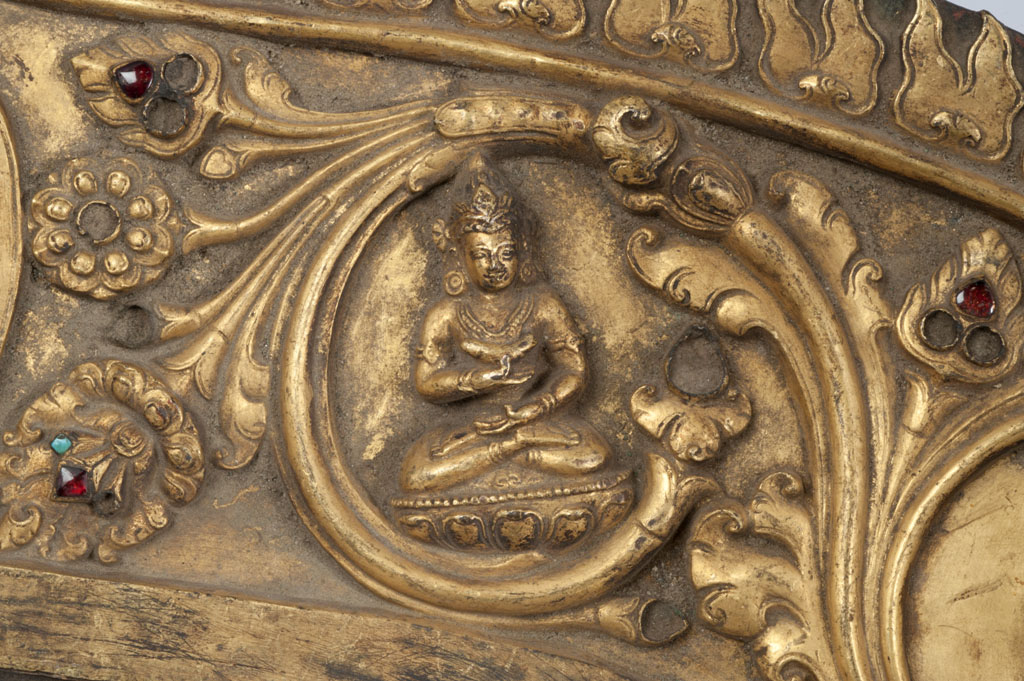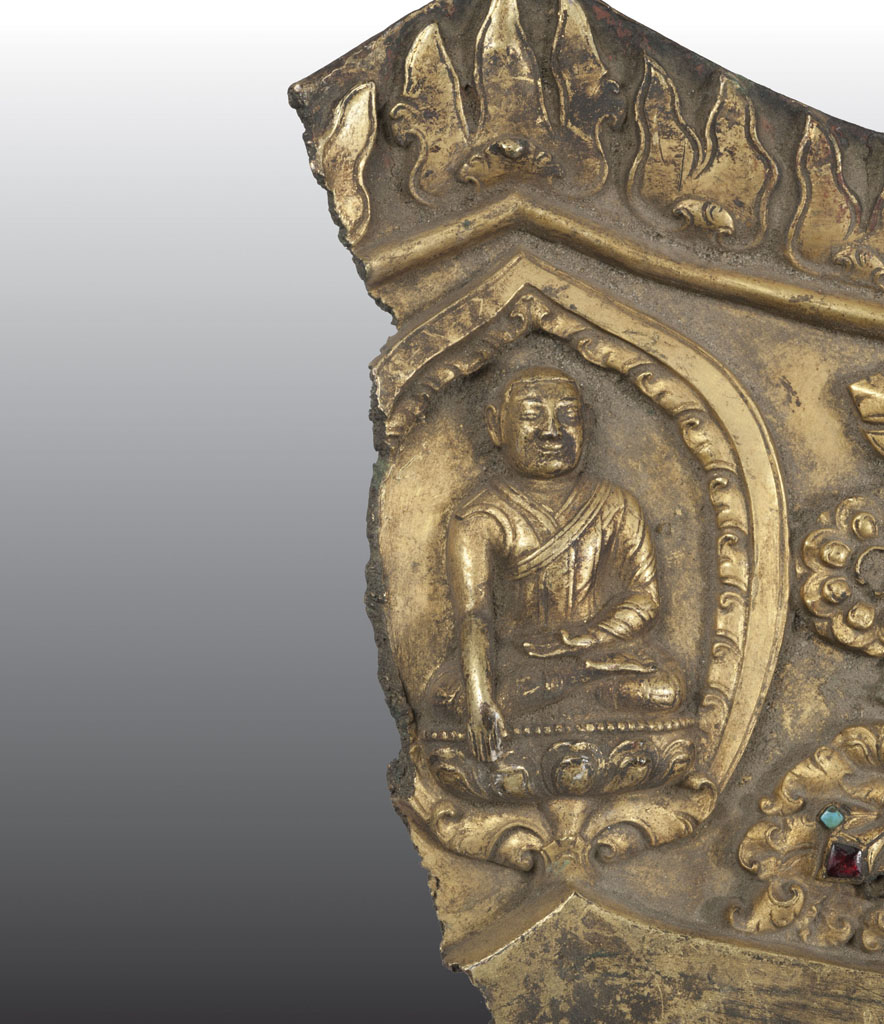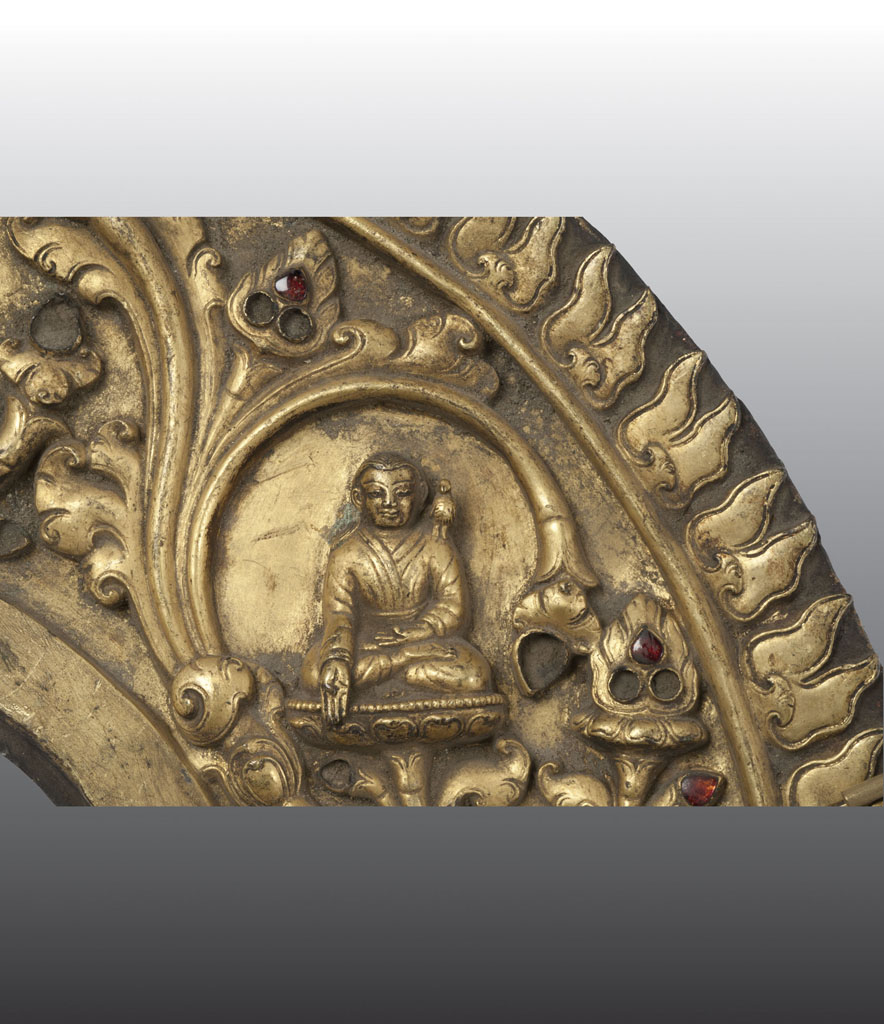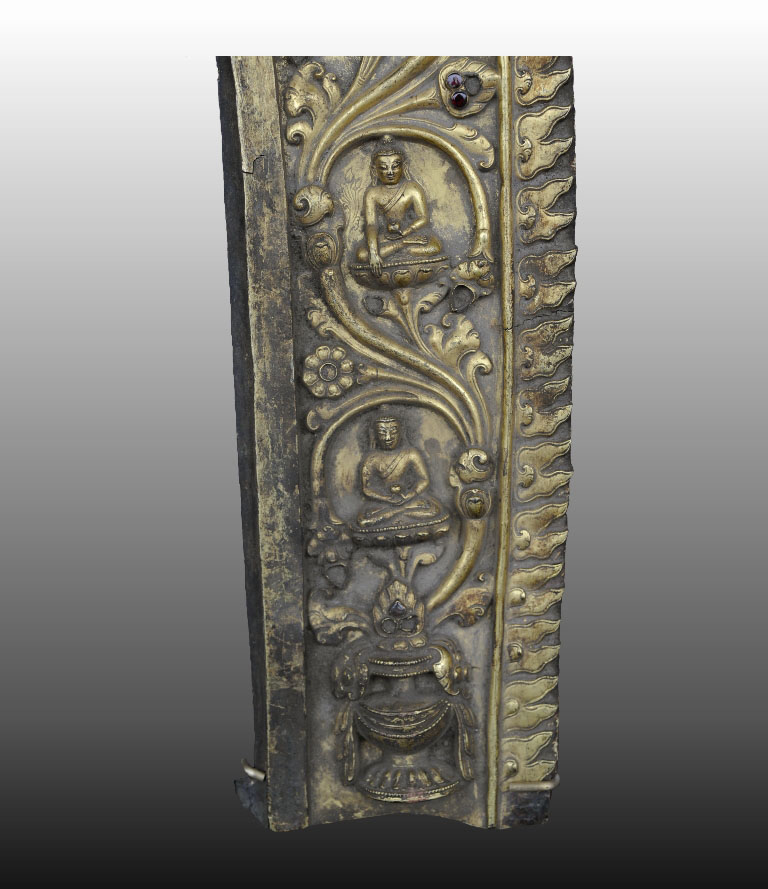|
|
«« go back
Prabhâ fragment
Tibet - Gilded copper alloy with semiprecious stones - Height 26x11 cm - 16th century
This halo, decorated with small images of Buddhas and masters, surrounded the image of a deity or of an impor- tant master connected to the lineage of the characters depicted in it.
The style in which the scroll surrounding the figures was produced, the flowers which bloom at their extremities and the small flames burning on the edge of the prabhâ, lead one to suppose that this object was produced by Newar artists from the Nepal valley.
Some of the masters depicted in it, particularly the third master starting from the cusp of the halo, are related to the cultural legacy of the followers of the “Ancient” (rNy- ing-ma) Tibetan tradition of Buddhist teachings and of those of the “Tradition of the Commands” (bKa’-brgy- ud). This character, depicted in lay clothing with long hair falling down his back, may coincide with the Tibetan translator Khye’u-chung, who belonged to an impor- tant aristocratic Tibetan family, counted amongst the twenty-five main disciples of the great Indian tantric master Padmasambhava (see no. 13) and hence lived in the 8th century.
At a young age, Khye’u-chung was acknowledged as the reincarnation of a great Indian pandit and tradition has it that he learnt Sanskrit very easily although still a child. It was Padmasambhava who introduced him to esoteric teachings and in time Khye’u-chung became a great lay tantric master himself. The reason for which he is generally depicted in the company of a bird is tied to his ability to call and teach birds. Khye’u-chung spent his entire life in a mild, fertile valley of eastern Tibet. ALC (Free Circulation) |
